SurveyMonkey - ESG Materiality Assessment Survey Example

An ESG (Environmental Social Governance) materiality assessment gathers and highlights which environmental, social, and governance factors are perceived as most important and impactful for organization stakeholders -- a key first step in building an effective ESG strategy.
In this ESG materiality guide, we discuss the basics of materiality, how to conduct an assessment, and how to create an ESG materiality map that visualizes where factors rate for importance and impact.
Table of Contents
ESG materiality assessments are necessary when organizations are working to build effective ESG strategies with stakeholder buy-in and alignment. Materiality assessments reveal factors that the strategy should focus on, giving organizations a roadmap forward. It’s impossible to focus on all ESG factors at once, so prioritization is critical.
These assessments can also provide insight into cost benefits of each factor while ensuring the resulting ESG strategy meets stakeholder and consumer expectations.
It’s important to note that ESG frameworks, including the Global Reporting Initiative (GRI) and B Corp Certification, recommend organizations complete materiality assessments.
While the process of conducting a materiality assessment may differ slightly between organizations, assessments will typically follow some form of this process:
Various “factor finders” and mapping tools exist to help organizations determine ESG materiality. Check out these resources to help jumpstart your materiality assessment:
The ESG materiality assessment survey is perhaps the most critical piece of performing an assessment because it gathers data from YOUR stakeholders. While surveys might differ substantially across organizations, there are a few key tips to keep in mind:
Here are some survey question examples for inspiration.
SurveyMonkey - ESG Materiality Assessment Survey Example
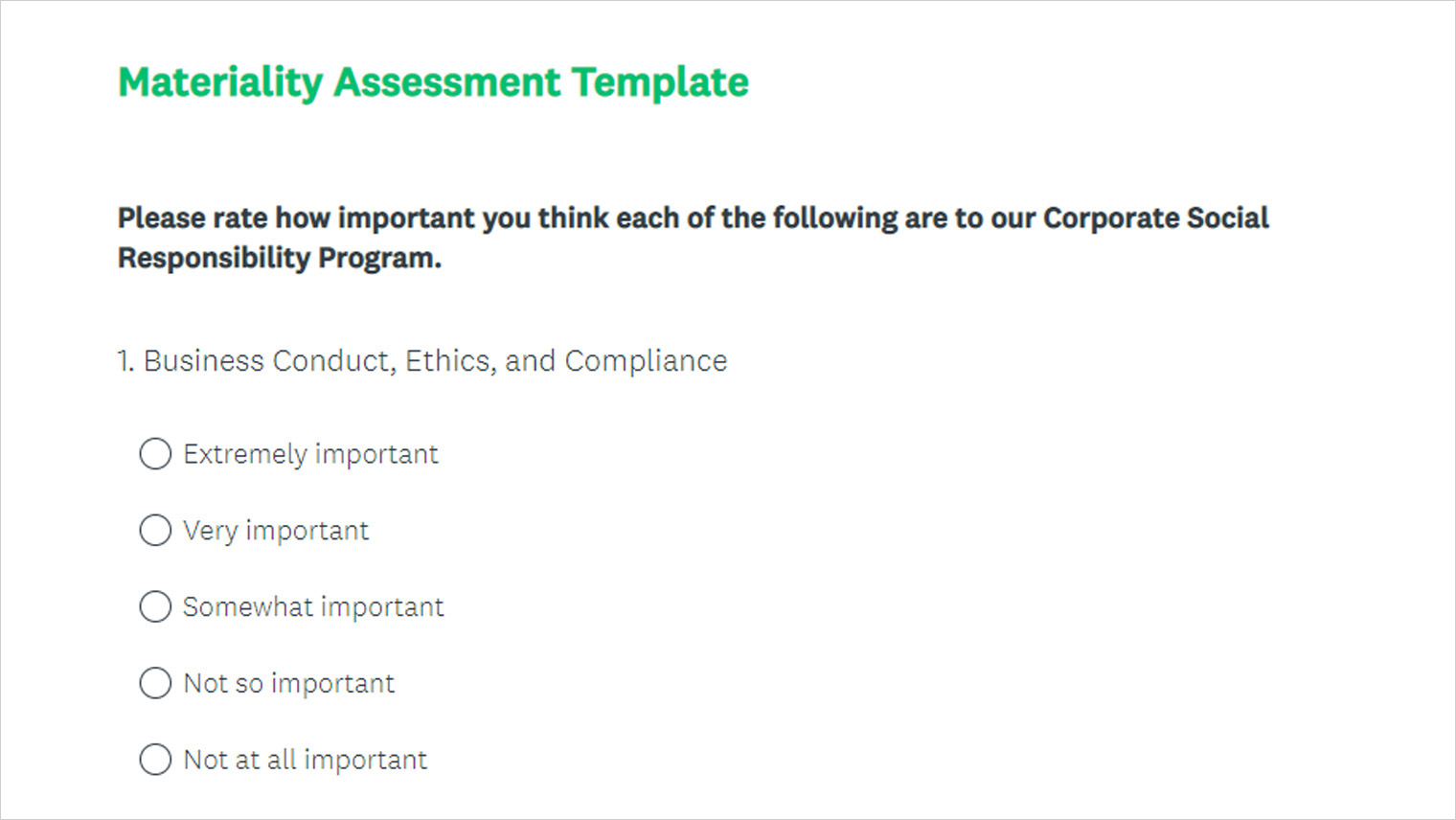
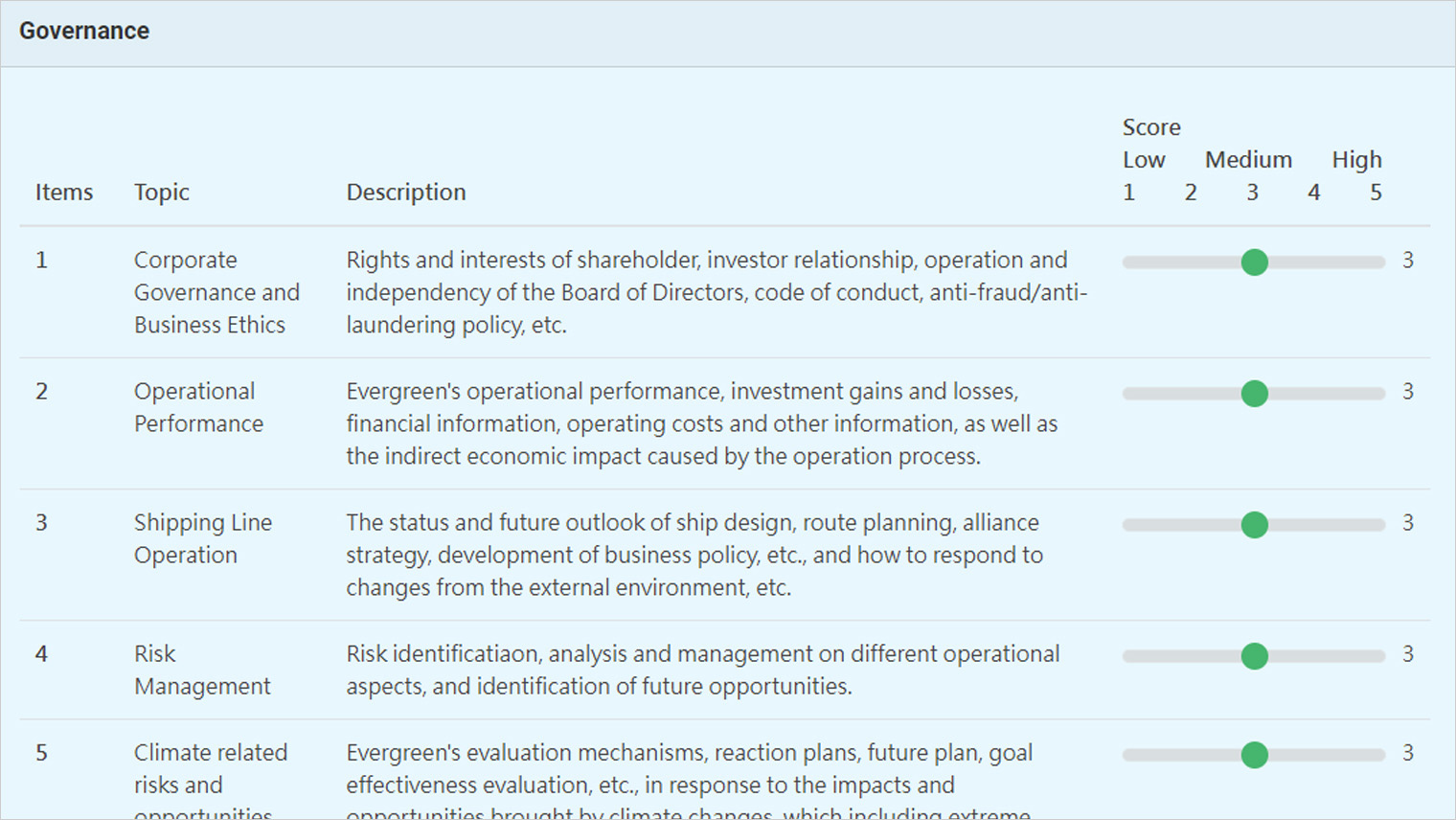
A materiality map (also referred to as a materiality matrix) is a visual representation of ESG factors plotted along importance and impact axes.
Note: A materiality map is not specific to ESG, so there are many methods and examples available online. Many materiality matrices map factors for internal vs external importance. Since ESG uniquely includes both internal and external for stakeholders, those traditional axes aren’t value-added for strategy.
The ESG materiality map or matrix compares all three groups of factors, including environmental, social, and governance. To develop an ESG map, follow these steps:
Many organizations have published their ESG materiality maps, which can be very useful in considering visualization factors for developing your own.
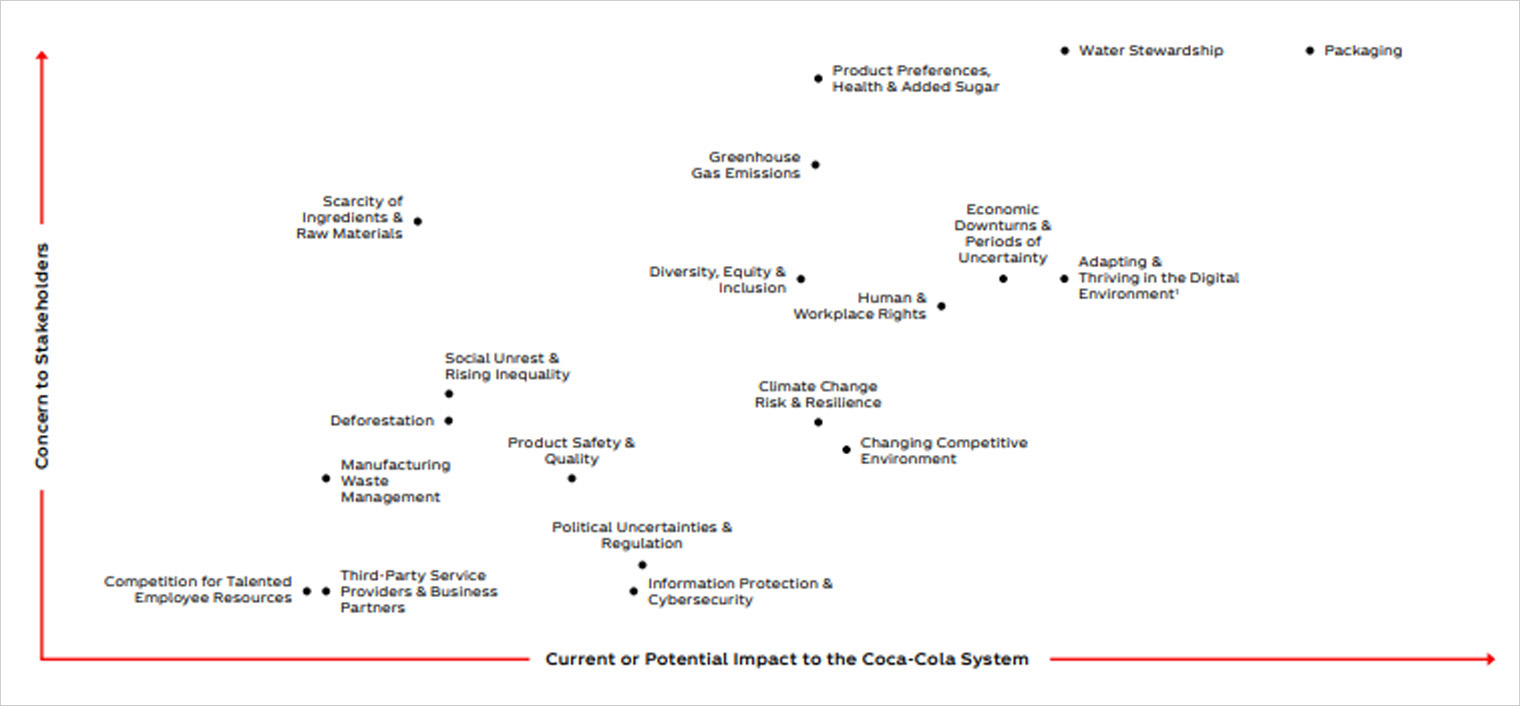
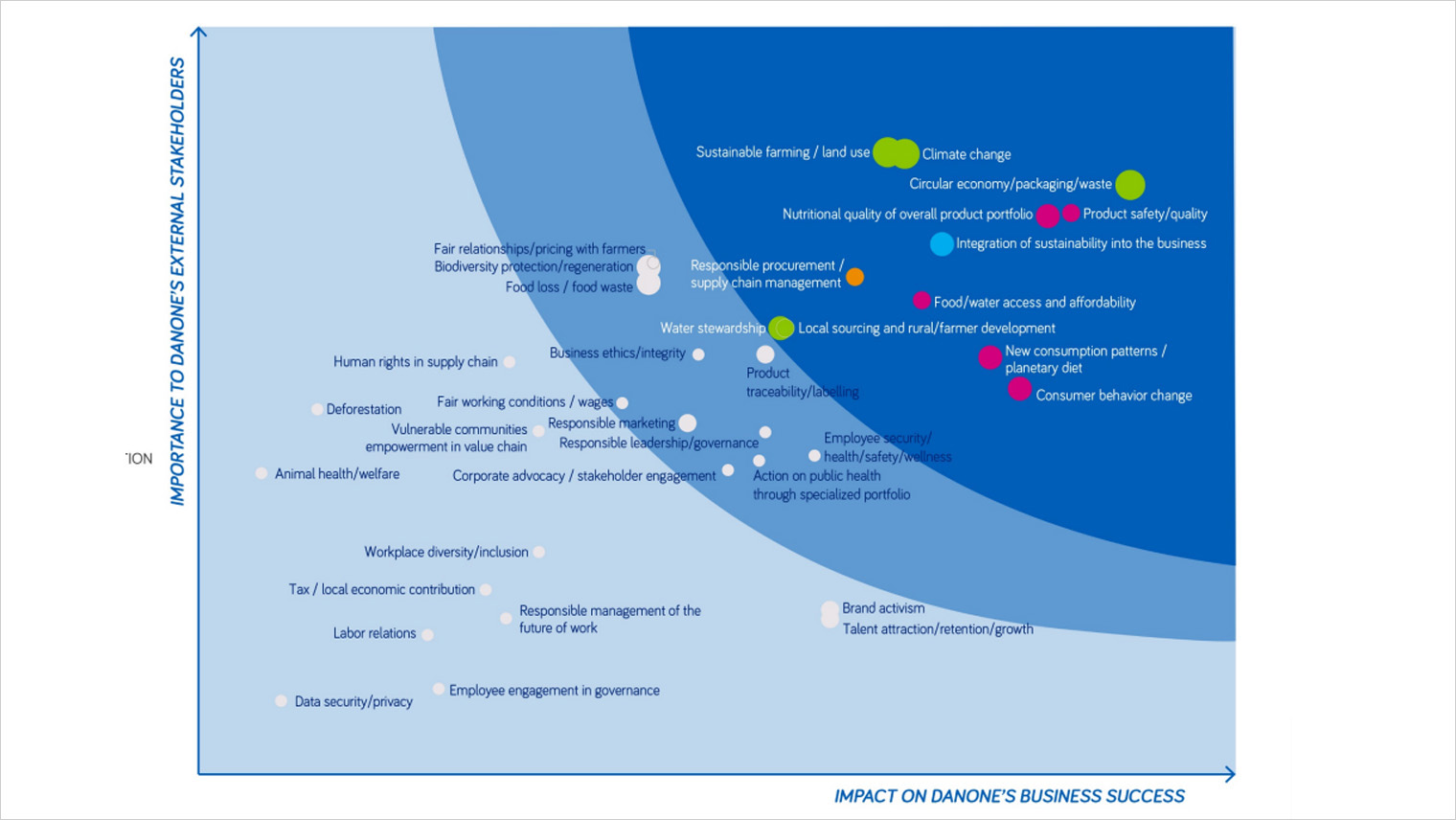
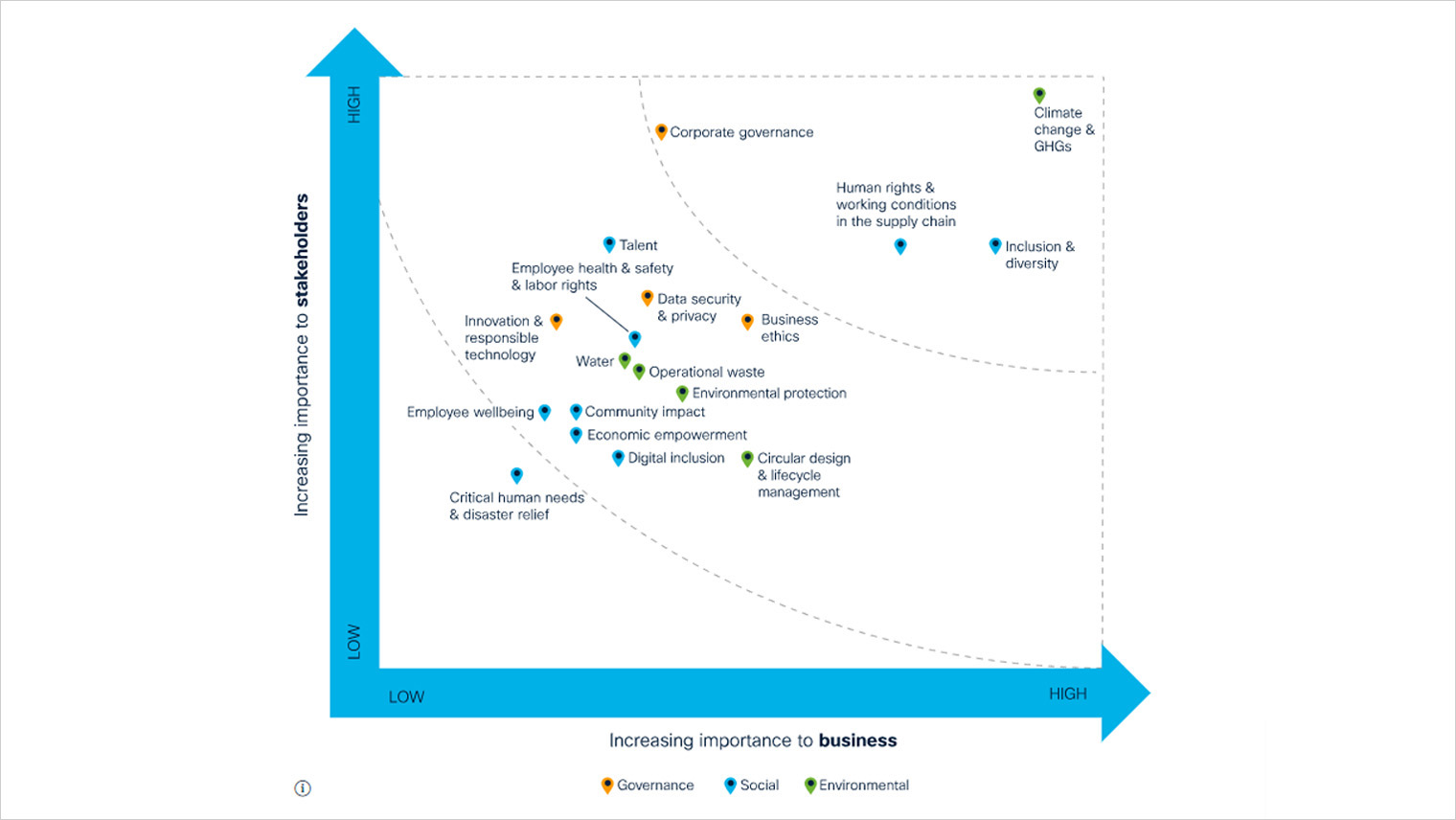
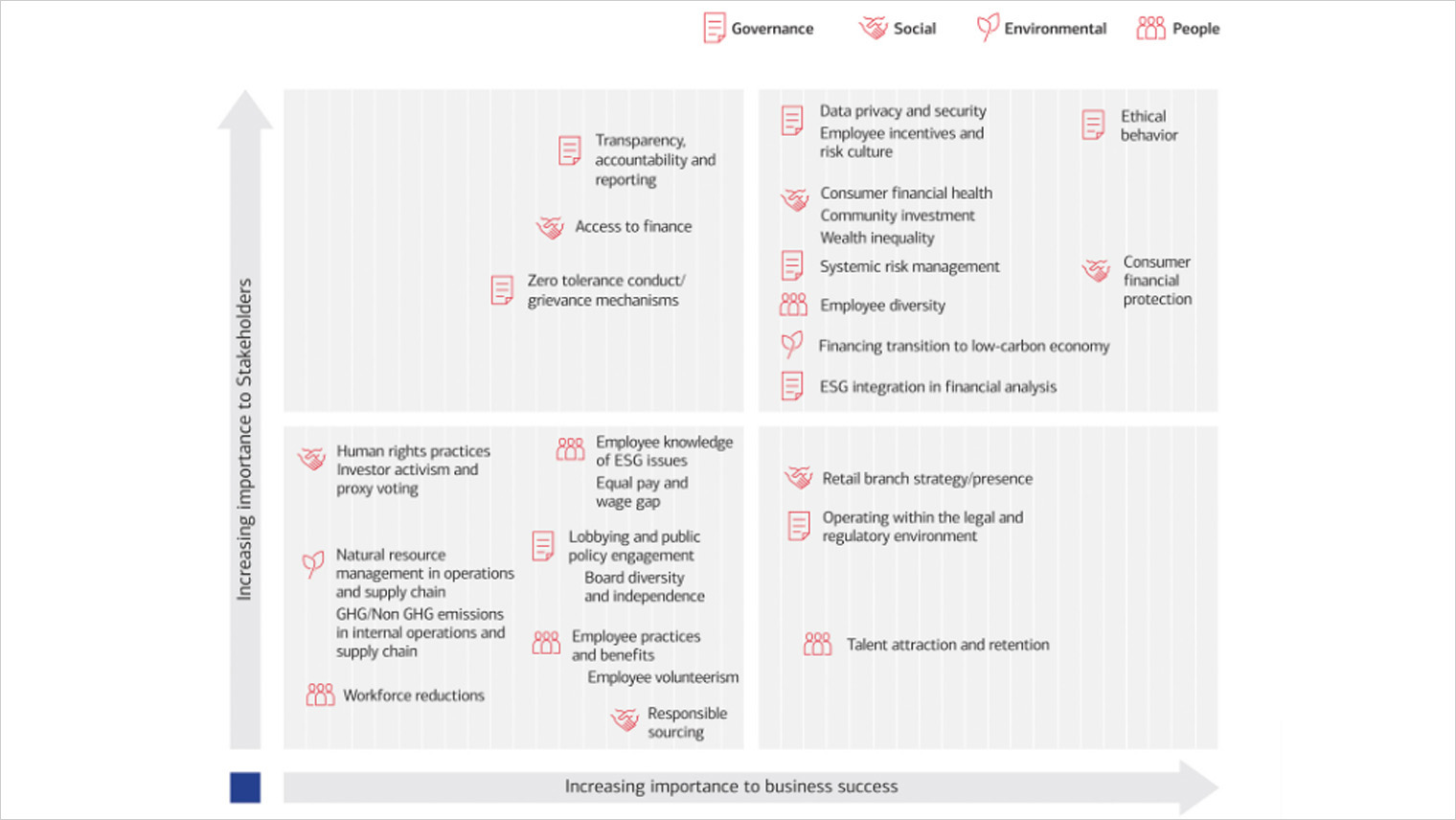
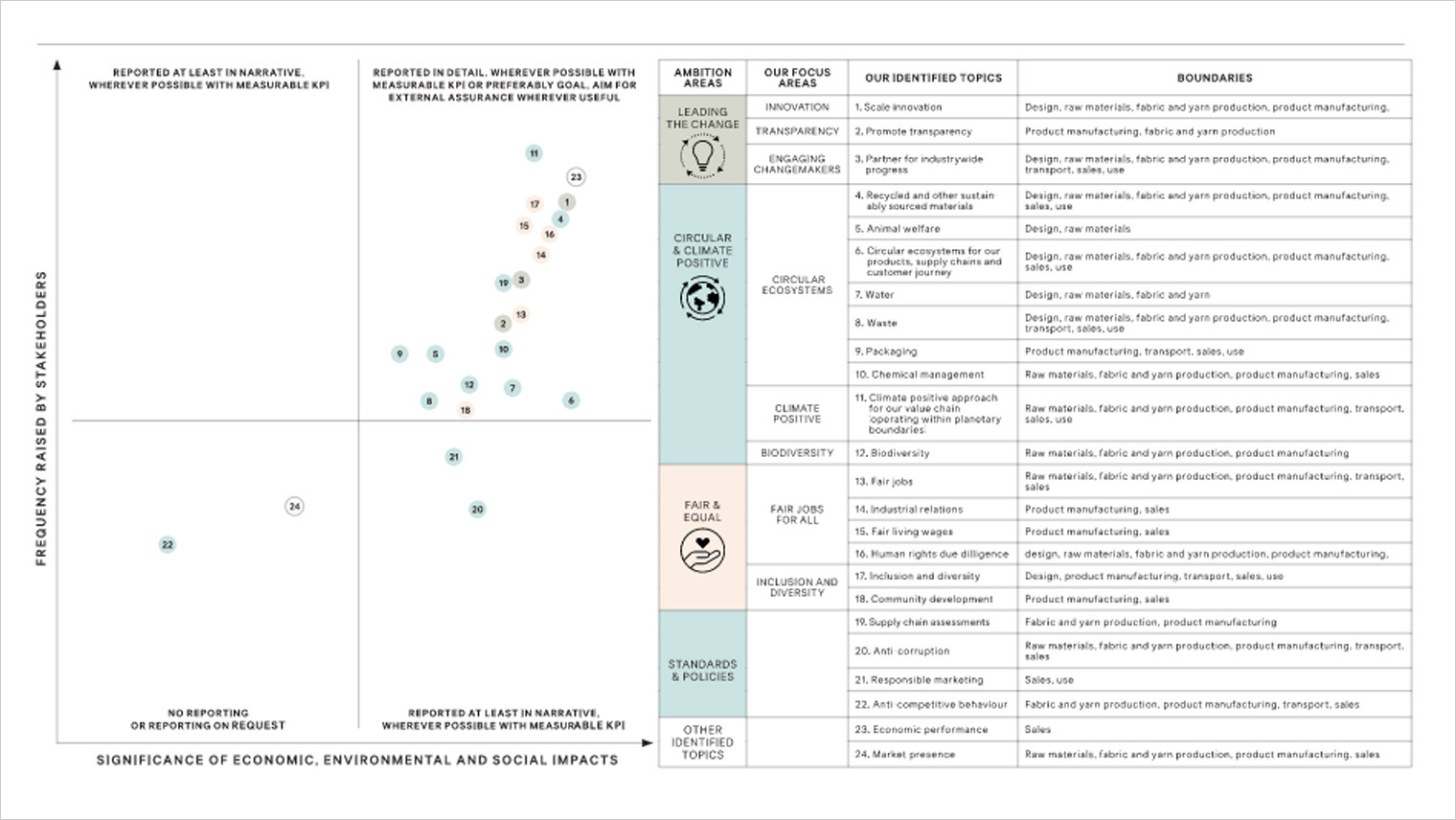
While best practices are still developing, here are some tips for consideration:
Completing a successful ESG materiality assessment, especially the first time, can be a bit challenging. Reach out to our ESG consultants today for help with planning and executing effective assessments to inform and guide your ESG strategy.
From risk assessments and framework selection to report guidance and independent assurance of data, our team can assist your ESG strategy and efforts.